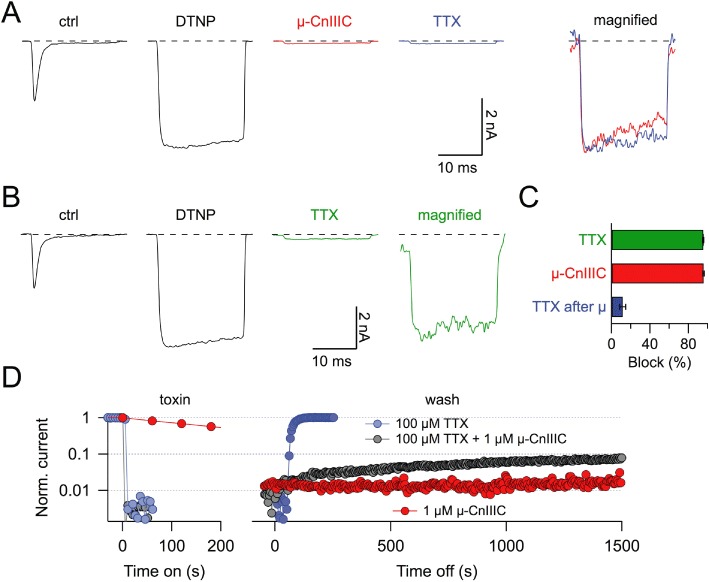Figure 6.

TTX block of non-inactivating, µ-CnIIIC-occupied channels. (A) Current responses at −20 mV of a HEK 293 cell expressing rNaV1.4-M1305C channels, under control conditions (ctrl), after application of 100 µM DTNP (DTNP), after subsequent application of 10 µM µ-CnIIIC without DTNP and finally after application of 1 µM TTX without DTNP or µ-CnIIIC. The panel on the right shows a magnified superposition of DTNP-modified traces with µ-CnIIIC (red) and subsequent TTX application (blue). (B) Similar experiment as in (A) but without application of µ-CnIIIC illustrating that 1 µM TTX potently blocks DTNP-modified channels. (C) Statistics of current block of non-inactivating rNaV1.4-M1305C channels induced by 1 µM TTX, 10 µM µ-CnIIIC or 1 µM TTX after equilibration in 10 µM µ-CnIIIC (n= 6), illustrating that the current remaining after µ-CnIIIC block is not readily sensitive to TTX. (D) Block kinetics and recovery kinetics of DNTP-modified rNaV1.4-M1305C channels after the application of 100 µM TTX, the same concentration of TTX together with 1 µM µ-CnIIIC or 1 µM µ-CnIIIC alone.
